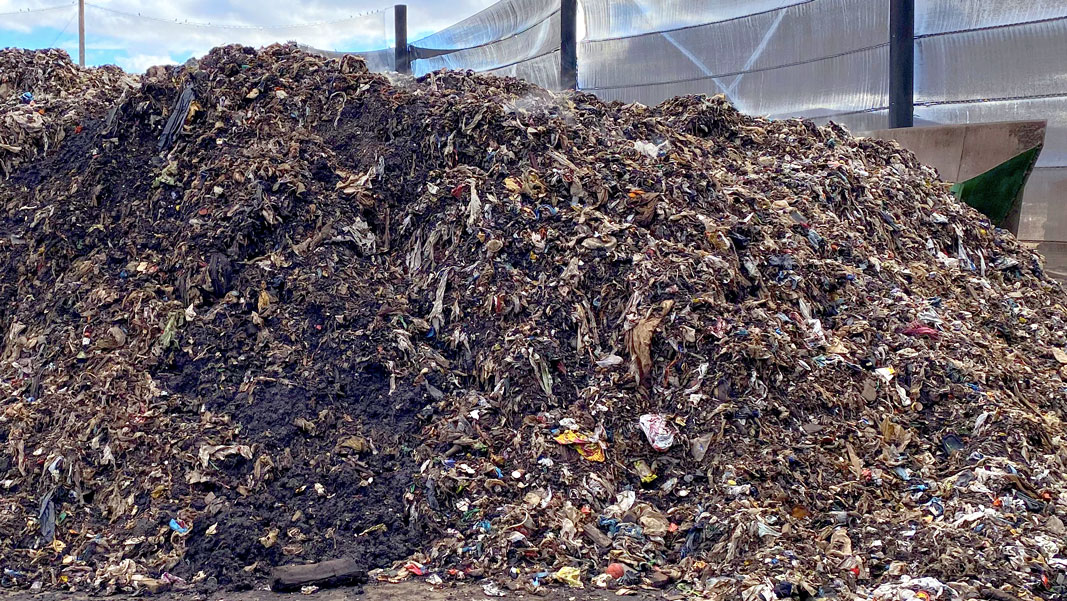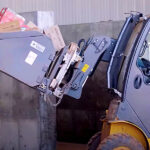Top: The organic fraction of mixed MSW that is recovered at GreenWaste’s High Diversion Organic Waste Processing Facility in San Jose is anaerobically digested and taken to GreenWaste’s composting facility in Gilroy (CA), . Photo courtesy of GreenWaste
Most organics recycling facilities in California process separated loads of organic waste streams to help meet the state’s organics diversion law, S.B. 1383. For facilities designed to recover the organic fraction from incoming loads of mixed municipal solid waste (MSW), CalRecycle created a separate category — High Diversion Organic Waste Processing Facilities (HDOWPF) — to distinguish them from source separated organics processing. These facilities typically use mechanical separation to recover the organic fines, which are then anaerobically digested (AD) and/or composted. BioCycle has reported on two facilities in California that are categorized as HDOWPF operations — the GreenWaste San Jose Materials Recovery Facility in San Jose that processes mixed MSW loads to recover and anaerobically digest the organic fraction, and the mixed waste processing facility that anaerobically digests and composts recovered organic fines in Santa Barbara County.
A HDOWPF must be in compliance with CalRecycle’s regulation to meet or exceed an annual average mixed waste organic content recovery rate of 50% between January 1, 2022 and December 31, 2024, and 75% after January 1, 2025 (as calculated pursuant to Section 18815.5(e) in the S.B. 1383 regulations). CalRecycle is required to assess whether a facility meets or exceeds the annual average mixed waste organic content recovery rate specified in the definition of a HDOWPF (section 18982(a)(33)); and, whether a facility meets the requirements necessary to be considered a HDOWPF. At the end of April, CalRecycle released its compilation of HDOWPFs that are currently satisfying the requirement that their annual average mixed waste organic content recovery rate has not dropped below 50% for two consecutive quarterly reporting periods and/or has not dropped below 50% for three quarterly reporting periods during the last 3 years. The agency also reported which HDOWPF facilities are meeting or exceeding the annual average of 50%. At this time, only one facility, the GreenWaste Materials Recovery Facility in San Jose, is in compliance and is meeting or exceeding the annual average of 50%.
“Jurisdictions that have a collection system that is required to be processed by a high diversion organic waste processing facility should be discussing this now with their haulers and facilities,” stated the CalRecycle release. “Jurisdictions should be assessing their programs. At some point each jurisdiction will be evaluated and sending material to a facility that is not meeting the performance requirements could result in a compliance issue that will need to be corrected.” BioCycle asked CalRecycle how many HDOWPFs are in operation in California and will update this article when a response is received.













